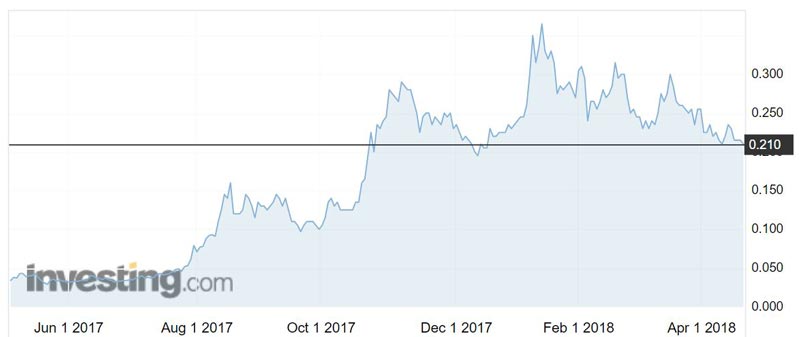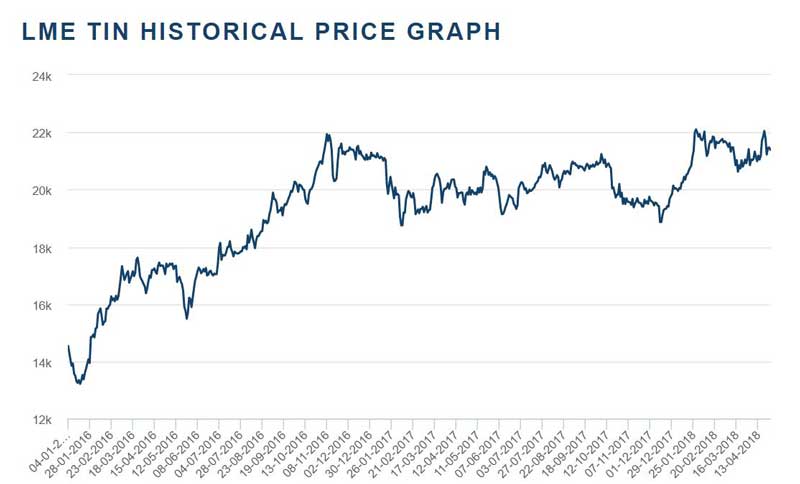How tin can help lithium darling AVZ’s bottom line

Scott Power says that Morgans is buying any pullbacks as 2020 looks like it will finish strong.
Although AVZ Minerals has been focused on building its lithium war chest in the Democratic Republic of the Congo, tin is shaping up as an important part of the high-profile Manono operation.
AVZ on Monday revealed thick intercepts of high grade lithium, which was accompanied by tin grades ranging between 800 and 1000 parts per million – or 0.08 to 0.1 per cent.
The company has previously outlined an exploration target of 300 to 400 million tonnes from drilling the Roche Dure target.
“It’s a pretty significant thing if you think about the tonnages that we’re starting to talk about,” managing director Nigel Ferguson told Stockhead.
“For example, if we’ve got 300 million tonnes at Roche Dure alone, 300 million tonnes at 0.1 per cent tin – the numbers start to crank up.
“We will recover that from the processing system, so we will be able to get a credit for it and essentially that should offset most of the transport costs for us.”
Investors have been eagerly awaiting the results of drilling after AVZ last year flagged its discovery at Manono as the “longest pegmatite intercept ever reported”.
The Manono find has seen AVZ become a market darling, with its share price rocketing 600 per cent in the past year to trade at 21c. Shares traded as high as 37c in mid-January.

But in a past life Manono was a tin mine.
The mine, which is 60 per cent owned by AVZ, is located in the Katanga Tin Belt that stretches over 500km from near Kolwezi in the southwest to Kalemie in the northeast of the DRC.
Manono was mined for its tin content between 1919 and 1982, during which time a total of 100 million cubic metres of ore was processed to produce 185,000 tonnes of concentrate.
With the exception of some exploration work carried out on the old mine dumps to determine grades, little work has taken place since 1960.
- Bookmark this link for small cap breaking news
- Discuss small cap news in our Facebook group
- Follow us on Facebook or Twitter
- Subscribe to our daily newsletter
AVZ has four drill rigs on site and is in the process of completing a 20,000m drilling program with the aim of delivering a resource by the end of the June quarter.
The company was due to mobilise a fifth drill rig to site, but it is holding off on that for the moment due to a bridge collapse preventing access.
“We’ve got four working flat out,” Mr Ferguson said.
“They’re working 24/7, we’re getting good production metres and we’ve got the opportunity of another two drill rigs sitting there if we need them.
“We’re just holding fire at the moment. Four rigs is enough for us.”
Tin making a comeback
Tin has not been in the spotlight much, but there is now a renewed interest in the base metal, which was recently ranked as the metal most likely to be impacted by new technology.
It is primarily used as a solder component for electronic circuit boards and microchips — which accounts for about half of its global consumption.
While tin demand remains steady at the moment, the growing battery market and other new disruptive technologies are expected to drive an increase in demand for the commodity.
The tin price has jumped over 61 per cent since January 2016 and is sitting around $US21,390 ($28,279) per tonne.

UNLOCK INSIGHTS
Discover the untold stories of emerging ASX stocks.
Daily news and expert analysis, it's free to subscribe.
By proceeding, you confirm you understand that we handle personal information in accordance with our Privacy Policy.








